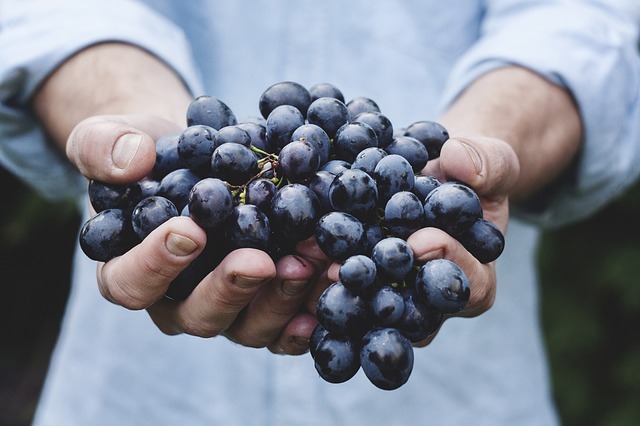February 17, 2017
Homestead Capital USA announced it has completed the acquisition of Sage Creek Vineyard – a 105-acre vineyard in Chiles Valley of Napa County, California planted in Cabernet Sauvignon Blanc, and smaller acreage blocks of other red Bordeaux varieties of grapes.
Founded in 2012, California and Iowa-based Homestead Capital USA LLC is a private equity firm with a vertically integrated investment platform focused on investing in operating farmland throughout the Mountain West, Delta, Midwest and Pacific regions of the United States. Throughout its investment decision and management processes, Homestead targets and leverages opportunities that will create value, and through the use of sustainable production practices, will maintain the long term value of its farmland.
The addition of the vineyard, which was sourced by Richard Brockmeyer, one of Homestead’s pacific region farm managers who will continue to manage the property, will add to Homestead’s existing vineyard portfolio which includes a 284.7-acre vineyard in the Santa Maria Valley of Santa Barbara County, California, and a Washington state vineyard planted in Cabernet Sauvignon, Merlot, and Syrah. Sage Creek will continue to be operated by Homestead Capital as an independent wine grape grower, and will continue to supply high quality fruit to wineries in Napa Valley.
“We are very excited to add the Sage Creek Vineyard to our permanent crop portfolio,” said Alex Sauer, vice president of Permanent Crops for Homestead. “The vineyard’s location in the Napa Valley American Viticultural Area provides us with a unique opportunity to establish a platform property focused on meeting the needs of high-end Napa Valley wineries.”
Homestead
In the last quarter of 2016, Homestead Capital announced that it had closed its second fund – Homestead Capital USA Farmland Fund II at $400 million. This latest fund, which surpassed its initial target of $350 million to close oversubscribed, more than doubles the firm’s first fund – Homestead Capital USA Farmland Fund I which closed in July of last year at $173 million.
Much like Fund I, which claims a portfolio of farms spanning 11 U.S. states producing 16 different crops including cotton, rice, wheat, soybeans, tree nuts, apples, table and wine grapes, as well as citrus fruits, Fund II continues along the same trajectory, pursuing investments in both row and permanent crop farmland across the Mountain West, Delta, Midwest, and Pacific regions of the country.
“With the capital from Fund II, we plan to continue to execute on our value-add investment strategy. Because of our local presence and broad agricultural network, we are seeing many attractive investment opportunities in our targeted regions,” said Dan Little, co-founder and portfolio manager of Homestead.
Gabe Santos, co-founder and portfolio manager at Homestead Capital told the Wall Street Journal that fundraising for Fund II began in the spring of 2016. Many investors from Fund I returned to make capital commitments to Fund II, with both funds attracting the attention of a varied field of institutional investors including endowments, foundations, funds of funds, high net worth individuals, insurance companies, and pension funds. This included MainePERS, which made a commitment of $50 million to Fund II in July 2016; the $68 billion Oregon Public Employees Retirement Fund (Oregon PERF), which committed $100 million to Fund II in December 2016; and the Washington State Investment Board (WSIB), which announced its intention to commit up to $100 million to Fund II in September 2016.
Timing
The move by Homestead to increase its California wine holdings is a timely strategic move. After years of drought conditions and a 2015 harvest that was early and lighter than usual, 2016 saw the value of U.S. wine exports, of which 90 percent originate in California, reach a new record at $1.62 billion, with a volume of 412.7 million liters, or 45.9 million cases, according to the Wine Institute.
“California wine exports have grown 78% by value in the last decade despite heavily-subsidized foreign competitors and high tariffs,” said Linsey Gallagher, vice president of the Wine Institute. “Our global trading partners are increasingly acknowledging the high quality of wine from the Golden State and responding to our California Wines marketing efforts throughout the world.”
Looking toward 2017, Rob McMillan, the founder of Silicon Valley Bank’s Wine Division, and author of the Bank’s yearly authoritative report on the industry, forecasts that sales of premium wines will see growth of between 10 and 14 percent this coming year over 2016 levels. And although the industry will be challenged by affluent baby boomer drinkers being replaced by growing numbers of millennials with less discretionary cash, and the availability of farm labor and its cost, McMillan expects M&As within the industry to remain dynamic through the coming year.
-Lynda Kiernan
Lynda Kiernan is Editor with GAI Media and daily contributor to GAI News. If you would like to submit a contribution for consideration please contact Ms. Kiernan at lkiernan@globalaginvesting.com

Let GAI News inform your engagement in the agriculture sector.
GAI News provides crucial and timely news and insight to help you stay ahead of critical agricultural trends through free delivery of two weekly newsletters, Ag Investing Weekly and AgTech Intel.




